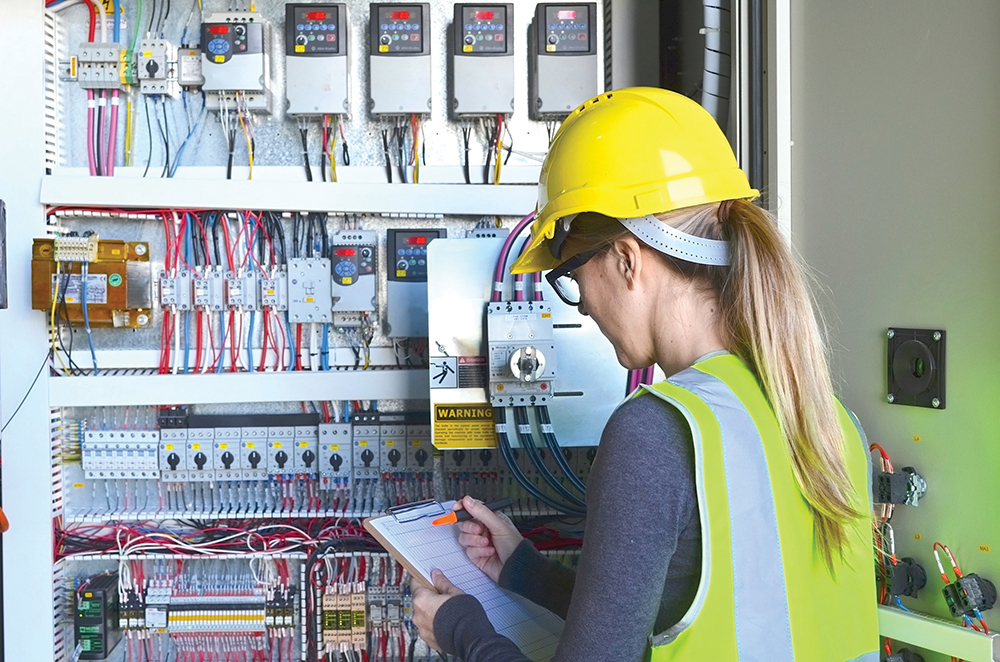What’s big, gray, and should be approached carefully? If you answered “an elephant,” why are you reading an electrical book? If you answered “switchgear,” you’re probably a code weenie.
Inspectors often ask, “What are the procedures for inspecting switchgear?” Like eating an elephant, the best approach is one bite at a time.
Switchgear is one of those terms that seem to get used a lot to describe many different kinds of electrical equipment and, for the most part, everyone understands what is being talked about.
When you look in Article 100 for a definition of switchgear, you come up empty except for metal-enclosed power switchgear; and when you read that definition, you will see that it is a switchgear assembly…not much help there. Many inspectors and electricians also tend to think of switchgear as being medium or high voltage and, indeed, in looking through the NEC for applicable rules, the only places you see the term metal-enclosed switchgear or switchgear or metal-clad switchgear are in the over-600-volt sections of various articles. So apparently if you are talking switchgear, you are talking about an over-600-volt installation, right? Not necessarily, there is a UL standard, 1558, that covers metal-enclosed switchgear assemblies rated up to 600 volts; so while not specifically mentioned in NE Crules for under 600 volts, you may encounter a switchgear assembly in the lower voltage applications.
The point of all this was to get you prepared for that first bite: look at the labeling on the equipment and see what exactly it is. You can’t begin to determine which code rules apply if you don’t know what you are dealing with.
The next thing to determine is the specific application of the equipment. Is it installed as service equipment or a downstream distribution installation? Once that is clear you can begin sorting through the applicable code rules as well as any installation restrictions placed on it as part of the listing instructions. You should always have access to the general listing guides that are provided by the testing agency, as they can provide valuable information as to how the product is intended to be installed and used.
You should be looking for labeling on each section of multi-section equipment and pay particular attention to the numbering sequence that is provided on each section’s labeling, as that indicates the order in which they are designed to be installed. If you are looking, say, from left to right and the sections say “1 of 4; 3 of 4; 4 of 4; and 2 of 4,” they are not installed in accordance with the listing instructions and must be changed. This means they must be physically rearranged, not just have the labels be switched. In some cases, the bus ampacity of the final end section is permitted to be of a lower rating than the preceding sections, and installing the sections out of sequence could very well lead to an unsafe condition.
Along with that you would also be looking at each section’s label for the bus rating to ensure proper loading and overcurrent protection.
Another inspection procedure that must be taken into account is to determine whether or not the installation is energized. Do not assume that because you are there to inspect the service at a new building that it is de-energized. Many times gear is backfed to operate temporary lighting or power circuits and you need to know this upfront. If this is an addition to an existing building, you should be following the proper procedures in NFPA 70E, Standard for Electrical Safety in the Workplace, prior to your inspection.
Once you can safely gain access to the interior of the equipment, you need to ensure that any temporary shipping material has been removed. This obviously is the responsibility of the installer but the inspector needs to be looking at this as well, if for no other reason than to avoid the embarrassment of releasing the connect order to the utility company and having them find a phase leg grounded by some temporary shipping material. Don’t laugh—it has happened!
To continue on with the inspection, there is really nothing unique to switchgear, it’s just bigger and has more conductors than a panelboard. The system voltage will determine which specific part of an article you must be focusing on and in the case of equipment over 600 volts, the specific article – Article 490. If you are dealing with a high (or medium voltage) installation remember that, for the most part, the rules in the over-600-volts part of the articles supplement or modify the general rules so you would need to review the entire article and not just the high voltage part. An example of this is 250.180 which is in Part X of Article 250 and states, “Where high-voltage systems are grounded, they shall comply with all applicable provisions of the preceding sections[emphasis added] of this article and with 250.182 through 250.190, which supplement and modify the preceding sections.”
To sum all this up, keep your inspection steps simple:
- verify the labeling of the equipment and its sections where applicable,
- look at the guide information for any specific instructions,
- consult your permit and plans for the usage of the equipment,
- along with available short-circuit current information.
From there on, it is just a matter of applying the code rules to each individual part of the equipment. You should develop consistency in how you approach any inspection, as this will help make sure that you have covered all of the requirements.
Trying to inspect everything all at once is tough; but just like eating the elephant, smaller bites will help you finish the job and be ready for more.














Find Us on Socials